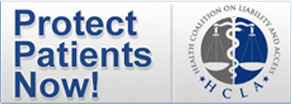Practicing defensive medicine to avoid medical liability lawsuits may not be a formal part of medical school curriculum, but it’s still being taught to medical students and residents, a study shows.
A survey of 202 fourth-year medical students and third-year residents at Northwestern University Feinberg School of Medicine in Chicago found that 94% of students and 96% of residents have seen examples of defensive medicine in their clinical training.
Nearly two-thirds of students and three-quarters of residents said their attending physician implied that they take medical liability concerns into consideration when making clinical decisions. Nearly half of respondents said their attending directly instructed them to do so, says the study in the February Academic Medicine (www.ncbi.nlm.nih.gov/pubmed/22189882/).
Educators should reframe such conversations to focus on reducing liability risk by improving patient safety and communication, said Kevin O’Leary, MD, lead study author and associate professor and associate chief of Northwestern’s Division of Hospital Medicine.
“At its core, medical malpractice is about preventable injury to patients,” he said. “I think we lose track of that and focus on the potential risk to ourselves when we should focus on the potential risk to our patients. We can help trainees with clinical decision-making without having to rely on [medical liability] as the motivation.”
The nationwide costs of defensive medicine have been conservatively estimated at $45.6 billion per year, according to a September 2010 Health Affairs study (content.healthaffairs.org/content/29/9/1569/).
The Academic Medicine study found that assurance behaviors — when physicians provide additional services that are of little clinical value to the patient — are particularly common. Ninety-two percent of students and 96% of residents witnessed such behaviors, while only 34% of students and 43% of residents saw physicians avoid providing services to patients for fear of medical liability risk.
Half of medical students and 67% of residents said they witnessed a medical error that resulted in harm to a patient. About 70% of these respondents said the errors were disclosed to patients or their families.
Dr. O’Leary said it was discouraging that about 30% of respondents who witnessed harmful medical errors said the mistakes were not disclosed. Disclosing errors is difficult, but it is a professional obligation, and most hospitals have supporting staff to help physicians through the process.
“It is really a difficult conversation that most medical providers haven’t had much training in,” he said.
A limitation of the study is that it focuses on a single institution. But Dr. O’Leary said he is confident defensive medicine is prevalent at most academic medical centers. More emphasis should be placed on aligning clinical training with medical school curricula.
“Our goal is that while the formal curriculum is being expanded to include patient safety, that we also take into account the clinical training,” he said.
